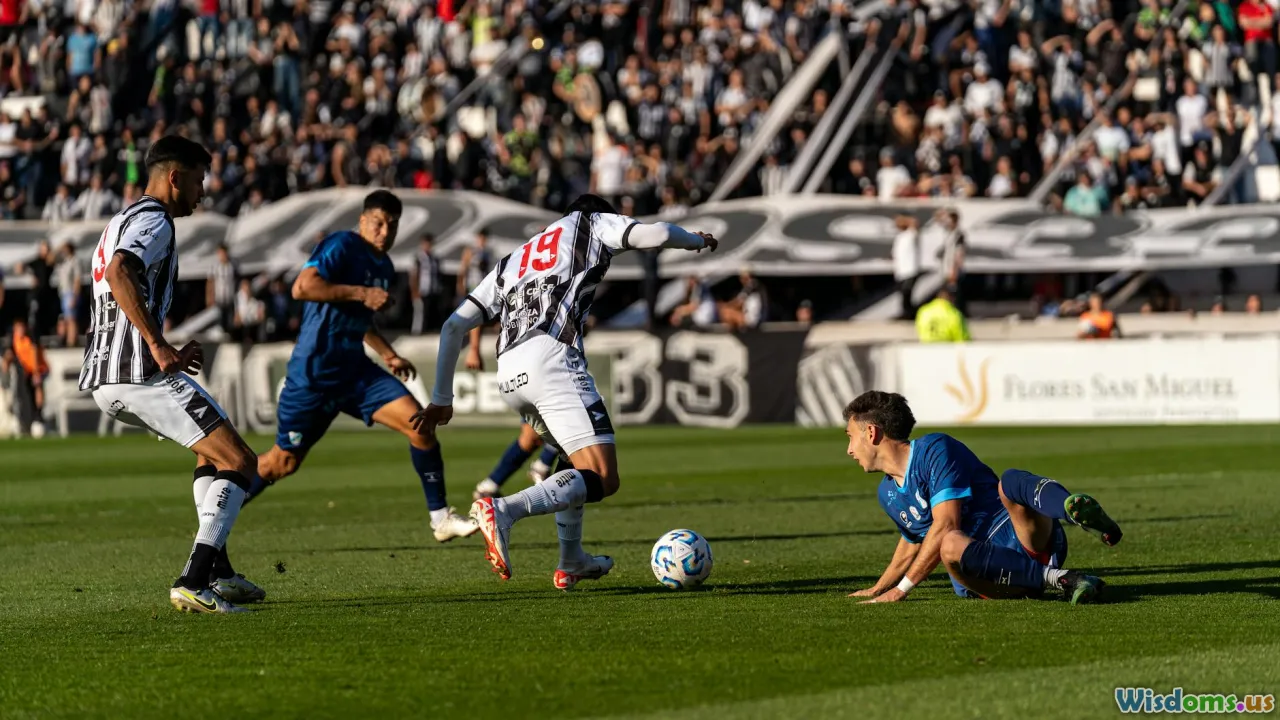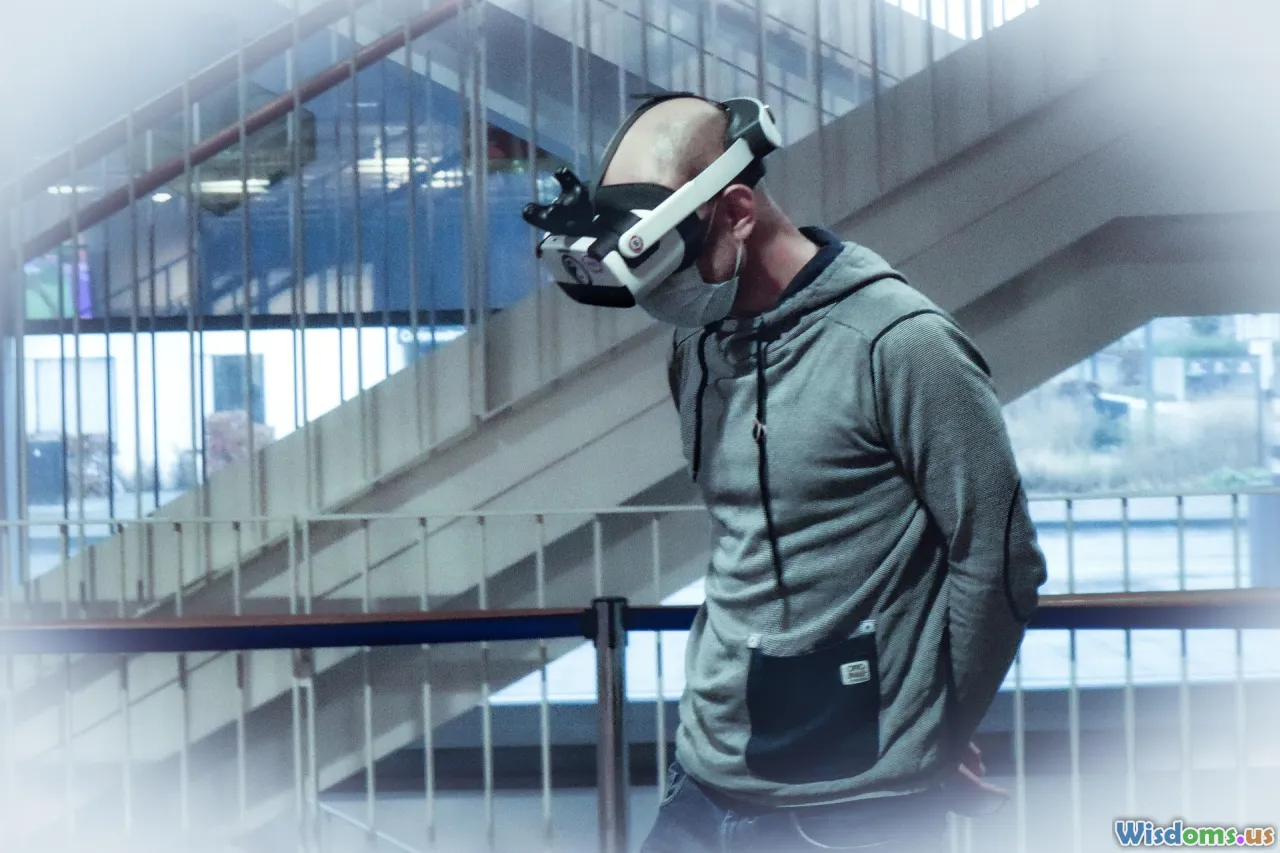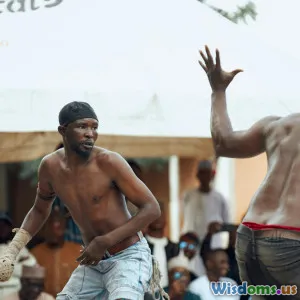
Why Do Fans Idolize Sports Celebrities More Than Actors
31 min read Explores why sports stars attract deeper fan devotion than actors, using psychology, live performance, tribal identity, social proof, and media economics, with examples from the Olympics, World Cup, and NBA. (0 Reviews)
Sports heroes seem to command a gravitational pull that even the most beloved actors rarely match. Stadiums swell with chants for a player’s name, jerseys become uniforms of identity, and highlight reels are replayed like sacred texts. Meanwhile, actors can be adored, emulated, and even mythologized, but the intensity and scale of fan idolization often tilts toward athletes. Why? The answer isn’t simple nostalgia or better PR; it’s a web of psychology, culture, economics, and media design that rewards unscripted excellence and communal belonging.
This article unpacks the roots of that difference, with examples, analysis, and practical takeaways for creators, brands, and even fans who want a healthier relationship with hero worship.
The power of the unscripted moment

Sports deliver stakes in real time. An athlete’s greatness emerges in unpredictable conditions: weather shifts, referee calls, injuries, momentum swings, crowd noise. The drama is live. When Serena Williams saves match points at the US Open or Lionel Messi threads an impossible pass in the 88th minute, fans witness something singular, not a perfected scene spliced together over weeks of production. That immediacy intensifies emotional bonding.
By contrast, actors operate in environments designed to control unpredictability. Performances can be brilliant, but most viewers understand that film and television are heavily curated. The final result is a composite of multiple takes, edits, and visual effects—artful, but mediated. The gap isn’t artistry; it’s the feeling that sports moments are forged under pressure without a safety net.
Two factors amplify this effect:
- Consequence clarity: In sports, stakes are measurable and immediate. The ball either goes in or it doesn’t. That binary outcome makes every second feel like a referendum on excellence.
- Shared time: Millions watch the same play at the same second. That synchronicity creates communal memory in a way on-demand viewing seldom replicates.
Example: Think of the global reaction to a World Cup final’s penalty shootout. Social feeds, living rooms, and city squares pulse with the same heartbeat. Few scripted moments, no matter how perfectly acted, can produce that simultaneous release.
Scale isn’t subtle: audience and frequency

Numbers magnify psychology. Major sports events consistently outdraw entertainment award shows and most streaming premieres. In the United States, the Super Bowl attracts well over 100 million average viewers domestically, dwarfing the Oscars, which tend to land in the tens of millions. Globally, football mega-events—World Cup matches, Champions League finals—garner enormous audiences, often filling public spaces in addition to TV and mobile screens.
Frequency compounds impact. A top-tier soccer player can appear in 40–60 club matches a season, plus national team duty. NBA stars may play 70–82 regular-season games, then playoffs. That means fans experience athletes repeatedly, in fresh contexts, with new outcomes. Actors, on the other hand, may headline one or two major films in a year—or less—leading to fewer windows for shared emotional arousal.
The steady rhythm of sports seasons creates a dependable cadence of engagement:
- Weekly rituals: Fans anticipate matchdays, tailgates, halftime shows, and postgame analysis.
- Narrative arcs: Comebacks, slumps, and career peaks unspool across months and years, encouraging fans to invest long-term.
- Content volume: Sports talk radio, podcasts, and highlight feeds fill daily appetites, increasing touchpoints.
The more often someone appears in your week, the more likely they become central to your identity scaffolding.
Tribal identity and the team effect

Sports teams act like flags around which communities rally. You don’t just root for the striker; you root for the crest, the colors, the city. The athlete becomes the living avatar of a collective identity that predates and outlives any individual player.
Compare that with actors. Fans love certain stars, but there is no enduring, place-based tribe built around a single actor in the same way there is for the Green Bay Packers or FC Barcelona. Franchises in film can approach this—think fans of the Marvel Cinematic Universe—but the allegiance is typically to the intellectual property, not to the actor alone. Casting changes can be absorbed by the storyworld; in sports, swapping a talismanic player reshapes the emotional geometry of the fan base.
Examples of tribal dynamics at work:
- Local pride: A Liverpool supporter’s identity is braided with the city’s history and working-class ethos; the players are emissaries of that story.
- Ritualized enmity: Rivalries like Yankees–Red Sox or Boca Juniors–River Plate codify opposition and elevate heroes into symbols of resistance and belonging.
- Generational transmission: Families pass down team loyalty as inheritance. An actor’s fandom is rarely a multigenerational heirloom in the same communal way.
When your idol represents your people, your past, and your place, devotion intensifies.
Measurable excellence and the simplicity of scoreboards

Sports are mercilessly transparent. Shot clocks and box scores quantify excellence in public view. Athletes’ careers are archived in data—points per game, win shares, expected goals, serve speeds—that fans can parse, debate, and admire. The scoreboard becomes a shared ledger of truth.
Actors contribute to collaborative works where causality is diffuse. A brilliant performance might be overshadowed by editing, marketing, or distribution misfires. Box office and awards function as proxies for success, but they’re entangled with budgets, release windows, and politics. It is harder for fans to point to an unambiguous number and say: that is greatness.
The clarity of metrics feeds idolization in several ways:
- Comparability: Fans can locate a player’s season among historical greats. Records, leaderboards, and milestones offer stepping stones into myth.
- Daily argument: Talk shows and online debates turn numbers into narrative fuel, making heroes central to the discourse.
- Fantasy play: Statistical systems power fantasy sports and video games, deepening involvement through interactive ownership.
Quantified excellence tells a simpler story, and simple stories spread wider and stick longer.
Rituals, habits, and emotional conditioning

Sports thrive on ritual. The schedule itself is a behavior-shaping device: same stadium seats on Sunday, same bar for the Champions League, same pregame playlist. Rituals create anticipation, a potent psychological ingredient in bonding. Anticipation releases dopamine, and consistent cycles of anticipation and payoff can condition attachment like well-designed habit loops.
Entertainment releases, in contrast, are often lumpy—a hit drops, then silence. Streaming tries to revive weekly cadence, but the communal energy is diluted when viewers time-shift. Sports cannot be time-shifted without spoilers; that urgency corrals people into a shared moment, which strengthens memory and identity.
Actionable takeaway for content creators: Borrow the sports cadence. Release episodes on a reliable schedule, tease match-like stakes at the end of each beat, and build rituals—live Q&As, premiere watch parties—to create the feeling of real-time community.
The geography of attachment: local heroes and proximity

Athletes often wear literal maps on their sleeves. Local clubs, high school teams, and college programs create visible ladders from neighborhood fields to national arenas. When a kid in Milwaukee watches a Bucks game, they’re also seeing their city on the jersey. This proximity makes the hero’s success feel like a communal victory.
Actors may also come from a region, but the industry’s production hubs are less localized for most fans. Filming occurs behind closed sets with nonpublic pipelines. While fans can bond over a regional cinema movement—say, Nollywood in Nigeria or Tamil cinema in India—the everyday visibility of a local club pumping money and meaning into a neighborhood is hard to match.
Example: A lower-division football club in England might average a few thousand fans per match yet be the largest shared civic ritual in town. The starting fullback is someone locals might recognize at the grocer. That proximity fuses idol and community in a feedback loop of familiarity and pride.
Media design: real-time conversation and the highlight economy

Sports content is optimized for clipping, sharing, and arguing. A goal, dunk, or home run is a perfect short-form video. Social platforms reward these moments with outsized reach. Algorithms love clarity, and sports’ visual clarity (ball goes in, body flies, clock hits zero) travels better than nuanced acting beats which often require context to appreciate.
Live conversation also privileges sports. Second-screen behaviors—posting, betting, meme-making—create social stickiness. Actors do generate live buzz during awards shows or franchise premieres, but the frequency and structure of sports gives fans far more opportunities to produce and consume contagious media.
Tip for actors and studios: Design for highlightability. Create behind-the-scenes micro-moments, craft stunt-level practical effects that read instantly in short clips, and treat premieres like live events with watch-along communities.
The economic flywheel: merch, endorsements, and repetition

Athletes monetarily benefit from repeated visibility in uniform, which becomes wearable merchandise. Jerseys, scarves, and sneakers are identity tokens, not just products. Every match is a runway for branded symbols, fueling an economic flywheel that reinforces celebrity.
Actors have merchandise through franchises, but it’s less personalized. Fans wear a character or a logo, not usually the actor’s name and number. Endorsements follow suit: performance categories—footwear, energy drinks, sports tech—are tightly aligned with the athlete’s public function. The congruence feels natural. With actors, brand fit varies and can ring hollow if the story between star and product is thin.
Example: The global resonance of a signature basketball sneaker line keeps the athlete culturally present, even off-season. Shoe drops, colorways, and performance narratives continue the myth between games.
Developmental pathways: participation and aspirational mirroring

More people grow up playing sports than acting in professional film sets. Little league, school teams, pickup games—these experiences seed empathetic understanding. Fans know the sting of a missed shot or the joy of a perfect pass. This embodied recognition makes an athlete’s excellence feel both alien and adjacent: I have done a small version of this; they do it at a transcendent level.
Acting also has youth pathways—drama clubs, local theater—but the physical participation rate and public visibility of amateur sports are far higher. The result is a widespread sense of competence and aspiration: kids can imitate a jump shot every day at the park; replicating a meticulously crafted performance requires access to entirely different tools and collaborators.
This familiarity feeds parasocial bonds. Fans project their own practice identity onto the star: the softball player who mimics a pro pitcher’s pre-throw routine, the weekend tennis player who studies footwork clips. The mirror is literal and daily.
Parasocial intimacy: access, authenticity, and vulnerability

Athletes are interviewed immediately after failure. Cameras follow them into tunnels, locker rooms, and mixed zones. Fans hear the voice shaking, see the sweat, watch the unguarded reactions. Because the work is public and the outcome is unfiltered, vulnerability is native to the form.
Actors promote finished works with rehearsed press tours. They may share vulnerable stories, but the profession’s visibility is less tied to live disappointment. Social media narrows the gap—plenty of actors show authentic moments—but sports offers more baked-in opportunities for viewers to witness raw emotion.
Case in point: Naomi Osaka speaking openly about mental health during tournament press changed the tone of global sports discourse, precisely because the contrast between supreme skill and human fragility was so immediate. The same kinds of confessions in Hollywood do resonate, yet the feedback loop between performance, pressure, and confession in sports feels more present-tense.
Nationhood and collective memory

International competitions are identity accelerants. When an athlete wears the national jersey, they become a vessel for collective aspirations. Victory or defeat is interpreted as a national mood. In many countries, these moments become intergenerational memory anchors: where were you when the team won it all?
While actors can spark national pride—think of national cinema renaissances or an actor winning a major award—sports fuse patriotism with spectacle at a scale and urgency that few cultural domains can match. Parades, anthems, and public holidays following championships make sure of it.
Scarcity, records, and the mythology of the peak

Athletic prime is scarce and brief. Bodies age. Windows close. This temporal scarcity heightens reverence and fuels mythology. Fans treat record books like scripture because they are etched against the clock of human performance. The notion of eras—Jordan’s 90s, Federer–Nadal–Djokovic in tennis, Serena’s dominance—turns careers into chapters in a living epic.
Actors can have long zeniths. Their prime doesn’t hinge as relentlessly on physical limits, and technology can disguise age. Because the peak is less clearly bounded, the urgency to adore now can be softer. That does not diminish artistic impact; it changes the emotional tempo. Sports run at allegro; screen stardom often moves adagio.
Tip for storytellers: Embrace arc definitions. Limited series, clear trilogies, and purposefully finite character arcs can create a sports-like urgency and elevate fan attachment.
Risk, sacrifice, and the code of pain

Athletes routinely risk visible harm. Broken bones, concussions, torn ligaments—fans witness the toll. Whether or not we should celebrate this is another debate, but culturally, visible sacrifice often correlates with admiration. The endurance of pain becomes proof of devotion to craft and team.
Acting carries its own risks—emotional labor, grueling schedules, sometimes physical hazards in stunts—but the blood-and-sweat visibility is lower. When Tom Cruise performs a dangerous stunt, it generates awe, yet those moments are exceptions. In sports, exposure to risk is the rule, every game.
The archetypes of grit—playing through injury, comeback stories, last-dance seasons—are sticky because they mirror broader human struggles. We project our own grind onto the athlete’s battered yet unbowed body.
Myth-making engines: commentary, beats, and daily lore

Sports media is built for myth. Beat reporters track every practice. Pundits construct narratives out of slumps and streaks. Talk radio argues arcana all day. The machine churns constantly, giving fans an endless flow of lore.
Film and TV press spike around release windows. There are making-of features, reviews, awards-season handicapping, and celebrity profiles, but not the daily micro-narratives that sports enjoys. The result: athletes remain in the foreground of public conversation more consistently.
Actionable idea for studios: Create season-long coverage with embedded journalists, training diaries, and performance analytics of stunt teams or VFX challenges. Invite fans to follow a production the way they’d follow a team, with weekly updates and narrative stakes.
Digital interactivity: fantasy, betting, and second-screen play

Fantasy leagues and legal sports wagering have transformed spectators into participants. Users build rosters, trade players, manage budgets, and sweat outcomes. This participatory layer intensifies attachment because fans feel co-authorship in the narrative of success and failure.
While there are fantasy games for films—predicting box office, award winners—these lack the granularity of player-level stats and the cadence of weekly scoring. Video games based on sports, with player ratings and signature moves, further reinforce individual athlete mythology.
A parallel is emerging: community watch parties for live TV, interactive fan voting on reality competitions, and live Q&A streaming are nudging entertainment closer to sports-like engagement. But sports still holds the lead in scalable, data-driven interactivity.
Counterexamples and cultural context

None of this means actors cannot be idolized at sports-like intensity. In India, Bollywood megastars command devotion that rivals any cricket legend; in East Asia, drama leads become pan-regional phenomena. Certain actors who also embody national stories or franchise totems approach athlete-level fervor.
Moreover, some sports cultures are actor-like: figure skating and gymnastics involve artistry judged subjectively, akin to critical evaluation in cinema. Conversely, some film franchises create team-like tribalism—long-running sagas with ensemble casts and world-building generate near-sport intensity at conventions and premieres.
Culture shapes the relative scale. In places where cinema is a dominant national industry, actors may anchor identity more than athletes. But globally, the structural advantages of sports—live unpredictability, frequency, and measurable stakes—still tend to tip the balance.
What actors and studios can borrow from sports

Sports offers a blueprint for deep fandom. Practical ways screen storytellers can adapt the model:
- Build cadence like a season: Plan marketing beats as fixtures—teasers, training-camp features, scrimmage screenings, preseason events—leading to a premiere week that feels like opening day.
- Create highlightable moments: Design signature scenes or stunts that play in 10–30 seconds with no context. Publish multiple camera angles, breakdowns, and practice footage for these moments.
- Invest in behind-the-scenes vulnerability: Share setbacks, rewrites, on-set challenges, and how teams solved them. Invite fans into the locker room of production.
- Establish rivalries and milestones: Friendly competition between casts, practical effects versus digital effects showcases, production milestones with public leaderboards (days without reshoots, shots completed) to gamify progress.
- Activate localized communities: Host city-based events, tie narratives to regional stories, and encourage local fan clubs that meet regularly. Reward them with exclusive content and early screenings.
- Encourage participatory layers: Predict-the-plot games, fan-made posters featured in official channels, interactive watch-alongs with real-time polls that influence minor elements (music choices for credits, poster variants).
What sports can learn from actors and film

The exchange cuts both ways:
- Deeper character arcs: Teams can spotlight personal stories with cinematic care, moving beyond stats to family histories, failures, and growth.
- Narrative coherence: Season-long documentary storytelling can give fans a through-line that expands beyond highlights, helping casuals latch on.
- Craft visibility: Just as films celebrate craft departments, teams can highlight the work of athletic trainers, analysts, and scouts, broadening appreciation and humanizing the enterprise.
- Artistic collaboration: Athlete-driven short films or collaborative projects with directors can diversify an athlete’s identity beyond the field, building resilience for life after retirement.
For brands: designing partnerships that feel inevitable

Brands ride the current of idolization to sell products—but consumers are sensitive to authenticity. Guidelines for more credible partnerships:
- Align function with role: Performance gear with athletes, creativity tools with actors. Match the product’s purpose to the celebrity’s domain.
- Co-create, don’t just sponsor: Invite the star into product design and storytelling. Fans sniff out stamp-and-go deals.
- Sync with ritual moments: Drop collaborations during key sports fixtures or premiere weeks, so the brand becomes part of the communal rhythm.
- Commit long-term: Multi-year narratives beat one-off splashy campaigns. Familiarity builds trust and myth.
For fans: healthier idolization without losing joy

Admiring elite performers can enrich life—if done thoughtfully. Practical tips:
- Separate performance from personhood: Celebrate excellence without expecting moral perfection. Hold people accountable without collapsing their entire identity into a single incident.
- Diversify your heroes: Give attention to women’s sports, para-athletes, independent filmmakers, and character actors. Variety widens empathy.
- Invest in local: Support community theaters and lower-division teams. Proximity deepens meaning and makes fandom less transactional.
- Watch with intent: Make rituals that include conversation, learning, and shared meals. Fandom thrives when it’s social, not solitary doomscrolling.
- Mind the parasocial line: Engage with content, but keep personal boundaries. Recognize that highlight reels are curated slices of complex lives.
The horizon: convergence and new forms of myth

The gap between sports and screen idolization is narrowing in key ways. Live entertainment experiments are borrowing from sports playbooks; sports is becoming more cinematic. Streaming platforms are snapping up rights to live games, crafting docuseries that stretch the seasonal narrative into year-round engagement. AR and VR promise new forms of presence, where fans can sit virtually courtside or step onto a set.
Three forces to watch:
- Women’s sports surge: As investment grows, women’s leagues are earning larger audiences and deeper storytelling. Relatable stars with activist voices could reshape how idolization looks and who gets it.
- Data democratization: Open analytics and creator tools let fans become analysts, editors, and storytellers. This could spawn micro-celebrities who interpret the game, blurring lines between fan and commentator.
- Interactive narratives: Hybrid events—part live match, part story game—might make actor and athlete roles converge, with performers judged live by audience choices and measurable outcomes.
Wherever the future lands, the underlying human hunger remains the same: we seek shared moments that make us feel part of something larger, and we idolize those who deliver those moments under pressure.
In the end, fans idolize sports celebrities more than actors not because one domain is inherently nobler, but because sports more frequently orchestrates conditions that intensify attachment: real-time stakes, tribal belonging, measurable excellence, and repeated proximity. For creators across fields, the lesson is to architect those conditions intentionally—design cadences that invite ritual, cultivate vulnerability without exploitation, and give audiences a simple, truthful scoreboard to cheer. When you do, adoration follows, not as hype but as a communal answer to a deep, enduring need.
Rate the Post
User Reviews
Popular Posts


















